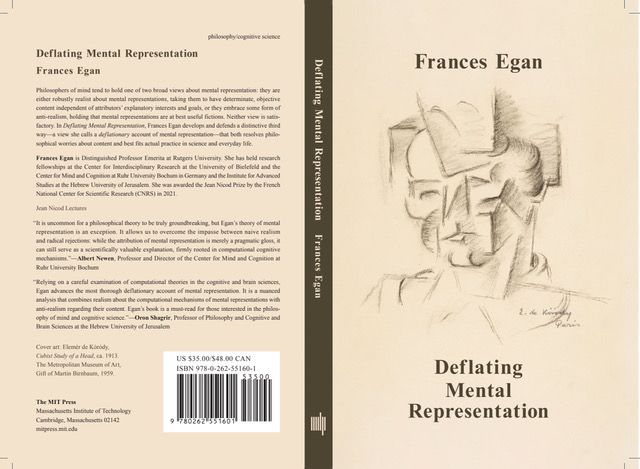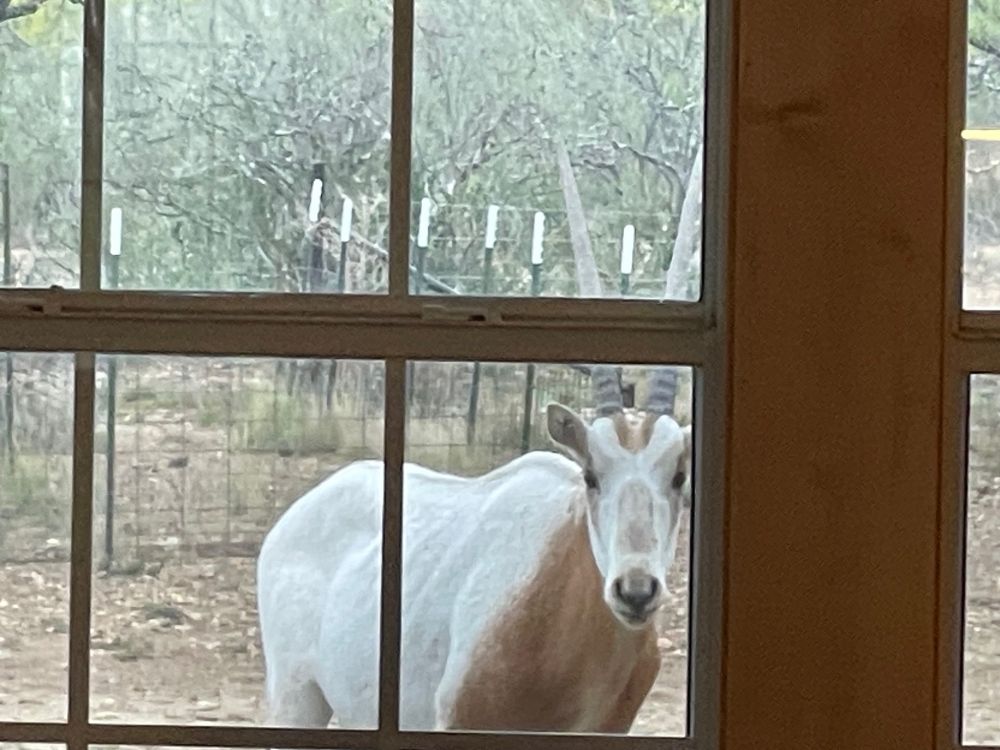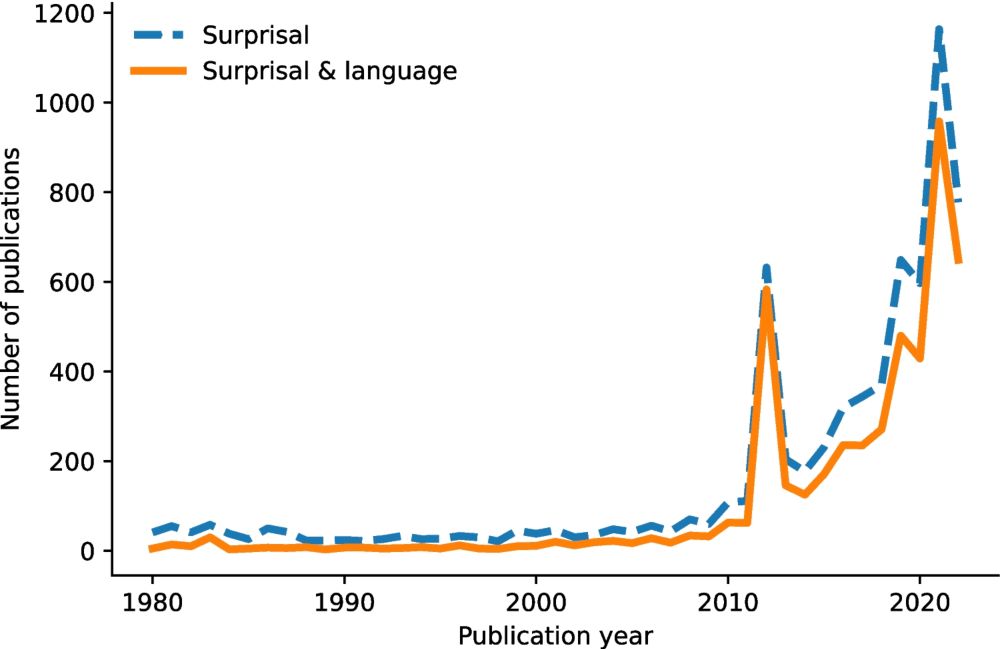
Headline saying “Fossil vomit contains new species of pterosaur from Brazil”. For additional info apart from the joke, the sub-headed says: “Filter-feeding flying reptile was likely devoured by a dinosaur during the early Cretaceous”
Roses are red
That dino looks ill
25.11.2025 19:58 — 👍 371 🔁 105 💬 5 📌 5
I don't know about you but the way my brain works is by analyzing the contents of the entire internet to make an educated guess about what word I should use next.
25.11.2025 14:05 — 👍 262 🔁 25 💬 3 📌 0
Google at its peak was basically the best information retrieval system in human history and they and every competitor decided going from there to “you didn’t want answers you wanted half-assed auto-complete 80%-wrong hallucinations” in a few years was the right idea
25.11.2025 01:57 — 👍 14396 🔁 3091 💬 281 📌 261

Mereological Syntax: Phrase Structure, Cyclicity, and Islands
An argument for replacing Chomsky’s set-theoretic Merge view of syntax with a theory of syntax based on mereological objects.Mereology is the study of part
At last! Open Access version of the book on MIT's site. One for the syntax nerds. I argue we need to replace Merge, that there are no Phases, and that we need to rethink the basic theoretical typology of Islands. Feel free to download with abandon! 🐦🐦 #syntax direct.mit.edu/books/oa-mon...
23.11.2025 13:51 — 👍 59 🔁 13 💬 2 📌 6
Are we really at a stage in public education where we consider it OK to have literally Google-branded schoolchildren whose learner identities are tied to being "responsible AI" users of private for-profit technologies?
22.11.2025 20:31 — 👍 130 🔁 32 💬 2 📌 5

Revised and expanded version of my 2021 Jean Nicod lectures, to be published March 11, MIT Press (open access) https://mitpress.mit.edu/9780262551601/deflating-mental-representation/
06.12.2024 14:32 — 👍 78 🔁 15 💬 3 📌 2


some unexpected visitors this morning
20.11.2025 15:49 — 👍 25 🔁 4 💬 0 📌 0
This is a really interesting article about a horrifying distortion of sign language happening in the UK, and which its creators are now trying to export to other countries and their sign languages
Learn actual sign languages from Deaf people, not from hearing people making their own weird versions!
19.11.2025 21:18 — 👍 225 🔁 117 💬 10 📌 5
Huge congrats to our lab's summer intern Aryanna Toomer from Howard University who won the undergraduate paper award at the Black in Neuro Conference -- invited to submit a paper on her work to Oxford Open Neuroscience as a freakin sophomore.
19.11.2025 21:14 — 👍 34 🔁 4 💬 0 📌 0
Things that will get you kicked out of academia forever:
- taking maternity leave at the wrong time
- spending too much time with your kids
- reporting harassment
- not moving every 2-3 years
- taking a partner's job/preferences into account
- mouthing off before tenure
18.11.2025 15:52 — 👍 1169 🔁 291 💬 6 📌 6
Correct. No notes
17.11.2025 19:16 — 👍 1 🔁 0 💬 0 📌 0
And “patriarch maxxing” was right there…
17.11.2025 19:15 — 👍 1 🔁 0 💬 1 📌 0
I just used the term “patriarchy maxxing” in a very normal conversation
17.11.2025 19:13 — 👍 16 🔁 2 💬 1 📌 0
For maximum alpha, read this microblogged cognitive poetry jam at 1.25x on your cellular intelligence device:
17.11.2025 18:07 — 👍 8 🔁 2 💬 0 📌 0

a cartoon elephant with glasses says " i now have additional questions "
Alt: a cartoon elephant says "i now have additional questions "
Now, we should think about what the questions are & how we can answer them.
An important question is: how is the brain capable of bootstrapping structure from statistics? And the reverse: does the brain refine probabilistic representations with structured knowledge, and if so, how does this work?
17.11.2025 17:12 — 👍 10 🔁 3 💬 0 📌 0

A diagram of surprisal ~ a brain. To the left, surprisal is decomposed in the terms 'syntax', 'word frequency', and '...' (other terms). To the right, the neural signal is equally decomposed in 'syntax' word frequency' and '...', each with their own waves associated.
This means that any effects found for surprisal always leave room for the possibility of latent factors driving both the probabilities and the human responses, and do not allow any conclusions about which factors are involved (and why).
So... Now what?
(image by Noémie te Rietmolen)
17.11.2025 17:12 — 👍 7 🔁 1 💬 1 📌 0
By contrast, using a data-driven feature like surprisal as an explanation prevents us from looking at the influence from latent factors by reflecting variance that stems from these factors as a second-order variable.
17.11.2025 17:12 — 👍 6 🔁 1 💬 1 📌 0
The problem with this power is that data-driven estimate will perform better than a theory-driven estimate. Because the data do not err, the theorizer does (@olivia.science & @andreaeyleen.bsky.social, 2021). These mistakes are awesome: they are opportunities to adjust our theory!
17.11.2025 17:12 — 👍 5 🔁 1 💬 1 📌 0

An image of an empty burger bun. On top of the bun it says 'surprisal', and in between the two halves are the terms: semantics, word frequency, pragmatics, plausibility, syntax, register, function words
The power of surprisal stems from the fact that (lexical) surprisal can —and will— parametrically reflect variation stemming from any domain or representational level of language. Why? Because words form patterns for many reasons! Semantics, syntax, frequency... Surprisal does not distinguish.
17.11.2025 17:12 — 👍 9 🔁 3 💬 1 📌 0

An image of an empty burger bun with sesame seeds. On top of the bun it says 'surprisal', and in between the two halves is written 'sources of variance'
Surprisal is the ‘everything bagel/nothing burger’ of predictors—it has everything baked in, which is the problem.
17.11.2025 17:12 — 👍 13 🔁 3 💬 1 📌 1

What’s Surprising About Surprisal - Computational Brain & Behavior
In the computational and experimental psycholinguistic literature, the mechanisms behind syntactic structure building (e.g., combining words into phrases and sentences) are the subject of considerable...
Many studies of naturalistic comprehension report that surprisal (often LLM derived) explains more of the variance in data than other predictors. Why is this? And why can it be problematic for our conclusions?
A 🧵 of takeaways from our paper doi.org/10.1007/s421... with @andreaeyleen.bsky.social
17.11.2025 17:12 — 👍 18 🔁 5 💬 1 📌 0

A photo of a woman in pink in a wheelchair. She has an intubation for oxygen. She looks up at the viewer. Words:
This is Alice's friend Sandy Ho, posting. Per Alice's wishes, this message is being shared at the time of her passing
Hi everyone, it looks like I ran out of time. I have so many dreams that I wanted to fulfill and plans to create new stories for you. There are a few in progress that might come to fruition in a few years if things work out. I did not ever imagine ! would live to this age and end up a writer, editor, activist, and more. As a kid riddled with insecurity and internalized ableism, I could not see a path forward. It was thanks to friendships and some great teachers who believed in me that I was able to fight my way out of miserable situations into a place where I finally felt comfortable in my skin.
We need more stories about us and our culture.
You all, we all, deserve the everything and more in such a hostile, ableist environment. Our wisdom is incisive and unflinching. I'm honored to be your ancestor and believe disabled oracles like us will light the way to the future. Don't let the bastards grind you down. I love you all.
may her memory
I am gutted to learn of @sfdirewolf.bsky.social (Alice Wong’s) passing. She was always a warm friend, a wonderful spirit, and someone who fostered my own growth. She helped me see that, as a #disabled person with chronic illness, I matter—I am whole. I’ll be posting some of Alice’s work. ❤️ forever
15.11.2025 11:37 — 👍 804 🔁 264 💬 12 📌 28

Call for Abstract (AMPC 2026): Applying Mathematical and Quantitative Psychology to Real World Complex Problems
Singapore, 23-25 February 2026. Abstract submission deadline 26 November 2024
Plus a bunch of other info. Go to https://ampc2026.com/ for details.
Hello fellow nerds! The upcoming Australasian Mathematical Psych Conference (AMPC) is going to be on Feb 23-25, and they've just put out the call for abstracts.
Details below. This is one of my favourite conferences and this year it's in Singapore(!!) which should be awesome.
13.11.2025 07:32 — 👍 19 🔁 8 💬 0 📌 0
It ys onlye Gen AI if it ys from the Gen AI regioun of Fraunce, otherwyse it ys just sparklinge plagiarism.
12.11.2025 17:07 — 👍 252 🔁 75 💬 0 📌 1
I find the premise that science should serve capital really troublesome to begin with
12.11.2025 16:57 — 👍 199 🔁 39 💬 1 📌 1
Thinking about the brain, spinal cord and how we move (and related neurotechnology). Into books, music, coffee, food, photography+art, animals & some humans. Now group leader at Champalimaud Research
#neuroskyence #Sensorimotor #compneurosky #Science
Postdoc in evolutionary genomics of polyploids at RBG Kew | science & society | opinions mine
Mizzou, Fulbright Belgium, and Michigan State alum. Here because of medicaid, public universities, and pell grants
https://kevinabird.github.io/
Statistical geneticist. Associate Prof at Dana-Farber / Harvard Medical School.
www.gusevlab.org
Cognitive Neuroscientist | @freieuniversitaet.bsky.social | Using #M/i/EEG, #fMRI, #tACS to read/write the brain | Fascinated by brain rhythms and consciousness
It’s okay, I’m in incognito mode.
By @joesondow.bsky.social
🧠 PhD at Max Planck School of Cognition
| Cognitive & Computatonal neuroscience | language | communication (she/her 🌻 #actuallyautistic )
Currently at @andreaeyleen.bsky.social's lab at the Max Planck Institute for Psycholinguistics
Photos are my own 📷
https://danmcquillan.org/
Postdoc in the Hayden lab at Baylor College of Medicine studying neural computations of natural language & communication in humans. Sister to someone with autism. F32 NIDCD Fellow | Autism Research Institute funded | she/her. melissafranch.com
Neuroscientist at Institut de Neurobiologie de la Méditerannée (Marseille).
Basal ganglia, time, effort, foraging, vigor, motor control.
Leaning toward philosophy (obsessed with Henri Bergson)
Human Intracranial Cognitive Neuroscience & Neurology at Yale University, previously at the University of Tuebingen. www.helfrich-lab.com Views are by own.
Cybernetics • AI Resistance • Dialectics • Film Noir • https://monroelab.com • vdgasjournal.com • https://padlet.com/verdigris21/verdigris-kjopwvgquczhyt06
Berkeley professor, former Secretary of Labor. Co-founder of @inequalitymedia.bsky.social and @imcivicaction.bsky.social.
Substack: http://robertreich.substack.com
Buy my new book: https://sites.prh.com/reich
Visit my website: https://rbreich.com/
Geoffrey Chaucer (Le Vostre GC): Servaunt of the Kynge. Blogger. Wryter of verse. Wearer of litel woolen hatte. Deputy Forestere of North Petherton. He/hym/hys.
Associate Professor in Neuroscience,🧠 self, body, mind 🦁 grief, neuropsychiatry, neurodiversity, psychedelics, somatosensation🫀 philosopher at heart 👩🔬PI @ BoehmeLab, Linköping, Sweden
Autistic fan of people. Prob AuDHD. LGBTQ+ ally because obviously. Routine goblin. She/her. Sweary, sorry. Lecturer (UK), researcher in language development, psycholinguistics, autism. ♾️🏳️⚧️🏳️🌈
Psycholinguist | Bilingualism | Morality | Speech Perception | Statistics | Radboud University | http://tiny.cc/Susanne
Neuroscientist | Brain Inspired Podcast
https://braininspired.co/
Mayor-Elect of New York City
PhD candidate Computational neurogenetics @mpi-nl.bsky.social | EiC MPI TalkLing | #SciComm | #neuroimaging | #genomics | #language | #stats | #ML | #scienceblog | swim-bike-run | dad





















